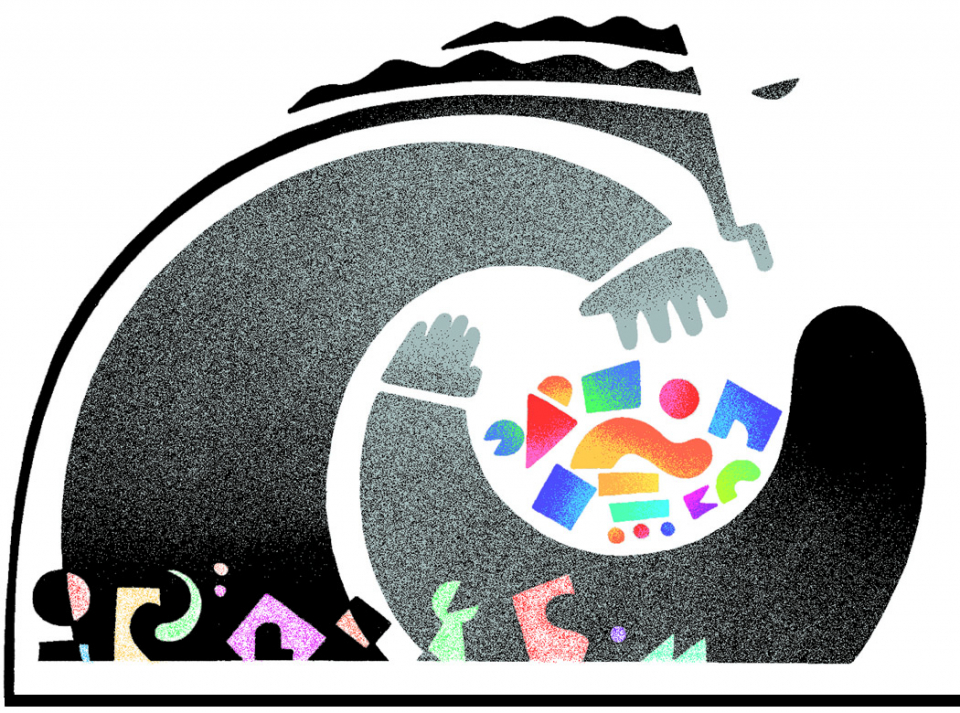Minilesson Print
Make Abstract Ideas Concrete

Abstract ideas—love, beauty, justice, freedom—are important, but they are hard to get your hands around. That's why we have art: to turn abstract ideas into concrete things so that we can get our hands around them.
You can use the same approach to better understand reading, writing, and grammar.
Your Turn Physically model abstract concepts in reading and writing. Use paper, paint, cardboard, tape, pipe cleaners, glue, paper clips, clay, papier-mâché, coat hangers, paper cups—whatever you can think of. Choose one or more of the following activities:
- Design a symbol or logo for a theme in a story or book (e.g., "star-crossed lovers" could be two stars, each with an elongated point that becomes a sword that overlaps the other).
- Create a social-media profile for a character from a story or book (e.g., Hester Prynne, Jay Gatsby, Mr. Hyde, Patina from the "Track" series).
- Create a map, floor plan, or diorama of an important setting in a story or book (e.g., Scout’s neighborhood, Bag End, the little house on the prairie).
- Find a physical representation of an abstract vocabulary term (e.g., osmosis could be a tea bag with flavor seeping out into the water).
- Identify a physical representation for each part of speech:
- noun (e.g., car)
- pronoun (e.g., license plate)
- verb (e.g., traffic light)
- adjective (e.g., automotive paint)
- adverb (e.g., speed limit sign)
- preposition (e.g., directional arrow)
- conjunction (e.g., trailer hitch)
- exclamation (e.g., shouting passenger)
- Build a model that shows each part of a prepositional phrase—preposition, object of the preposition, modifiers.
- Build structures that represent simple, compound, and complex sentences. (Hint: Consider using Legos, Tinkertoys, K'NEX, or other building toys.)
- Create a machine that demonstrates what a particular verb does to its direct object (e.g., throw ball or draw line).
- Create a physical representation of paragraph structure—topic sentence, detail sentences, transitions, closing sentence.
- Build a physical representation of essay structure—beginning paragraph, thesis statement, body paragraphs, main points, detail sentences, ending paragraph.
- Build a physical model of plot structure—beginning, exposition, rising action, climax, denouement, conclusion.

Make Abstract Ideas Concrete by Thoughtful Learning is licensed under a Creative Commons Attribution-NonCommercial-ShareAlike 4.0 International License.
Based on a work at k12.thoughtfullearning.com/minilesson/make-abstract-ideas-concrete.